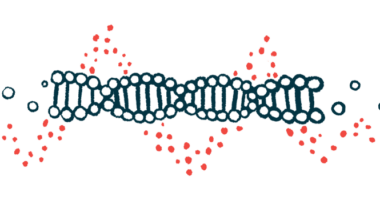Taiwan FAP prevalence on par with other countries, survival rates lower
5 years after diagnosis survival rate is about 50%; men, elderly at higher risk

The prevalence of familial amyloid polyneuropathy (FAP) in Taiwan in recent years is consistent with other mid-to-high prevalence countries, but survival rates are lower than in other nations, according to a recent study.
From 2008-2020, FAP prevalence, or the total number of people living with the disease, in Taiwan ranged from 0.04 to 4.79 cases per 1 million people. The survival rate five years after a confirmed FAP diagnosis was about 50%, with men and older patients at a higher risk of death.
This “extraordinarily high mortality” may be related to the late disease-onset of Ala97Ser, the most common FAP-causing mutation in Taiwan, and “may reflect the inadequate awareness and the necessity of early intervention with disease-modifying regimens,” the authors wrote in “Natural history and survival rate of familial amyloidosis with polyneuropathy: A nationwide databank,” which was published in the Annals of Clinical and Translational Neurology.
As with all types of hereditary transthyretin amyloidosis (hATTR), FAP is caused by mutations in the TTR gene, leading to abnormal clumps of the transthyretin protein, called amyloid fibrils, accumulating in tissues and causing organ damage.
FAP is a particular type of hATTR, or ATTRv, a feature of which is polyneuropathy, or nerve damage outside the brain and spinal cord that results in symptoms like numbness, tingling, or weakness. Heart problems as a consequence of amyloid deposits in heart tissue are also common.
The age of the onset of FAP and the severity of its symptoms can vary widely based on the specific TTR mutation. More than 130 different mutations have been associated with FAP, with Val30Met being the most common.
The Ala97Ser mutation is prevalent in Taiwan and South China, and these populations “may share different characteristics from common mutations associated with ATTRv,” the researchers wrote.
Real-world data about FAP frequency and its natural history in communities where the Ala97Ser mutation is predominant are lacking, leading researchers in Taiwan to review the Taiwan National Health Insurance Research Database from 2008 to 2020, which covered 99.9% of Taiwan’s population in 2021–2022, to analyze data from FAP patients.
FAP prevalence, survival rates in Taiwan
A total of 175 confirmed FAP patients were identified. They were mostly male (77.7%) and their diagnosis had been confirmed at a mean age of 62.8, which is consistent with reports that Ala97Ser is associated with a later disease onset, the researchers noted.
Patients were followed for a mean of nearly 2.5 years and most weren’t treated for FAP, meaning their clinical outcomes generally reflected the natural disease course.
From 2008 to 2020, the annual incidence rate, or the number of new cases per year, was 0.04-1.14 per million people, while the prevalence rate was 0.04-4.79 cases per million.
The adjusted prevalence in 2017 was of 2.76 cases per 1 million people, which is overall “within the range of moderate-prevalence countries worldwide,” the researchers wrote, adding that increases in FAP’s prevalence over time “might be due to gradual improvements in awareness and diagnosis in recent years.” These prevalence and incidence numbers are conservative estimates and the true value may be underestimated, particularly in earlier years when a FAP diagnosis was not as reliable, they said.
Survival rates were examined among the 148 people with a confirmed FAP diagnosis between 2008-2019. A total of 62 deaths were recorded, with a mean overall estimated survival of 2.82 years after a confirmed diagnosis (range, 0-7 years).
The age at a confirmed diagnosis was significantly higher among the nonsurvivor group than patients who were still alive at the last follow-up (65.9 vs. 60.5 years). Plus, for every one-year increase in age at the time FAP was validated, there was an 11% increase in the risk of death among patients.
The five-year survival rate after a confirmed diagnosis was about 50%, with male patients at a more than twofold higher mortality risk than females.
The most common causes of death were unspecified amyloid buildup, or amyloidosis (30.6%), organ-limited amyloidosis (20.9%), and neuropathic heredofamilial amyloidosis (9.7%), another term for FAP, although more specific information wasn’t available.
These survival rates are notably lower than natural history reports in other countries, including the U.S., Japan, Western and Northern Europe, the scientists noted, adding that “could be related to the late onset of the Ala97Ser mutation or delayed diagnosis and treatment due to poor awareness and treatment in the past decade.”
The two “most common departments visited by these patients were neurology and family medicine (for outpatient care) and neurology and cardiology (for inpatient care).
“In conclusion, raising clinician awareness of [FAP] as a differential diagnosis of patients who initially present with otherwise [unknown-cause] polyneuropathy is important since symptoms such as carpal tunnel syndrome may precede the diagnosis by years and the outpatient department that patients … may visit can vary due to variable initial presentation,” the researchers wrote. “Clinicians should keep red-flag signs in mind, as early detection accompanied by early treatment with the latest therapeutic approaches provides better outcomes.”







